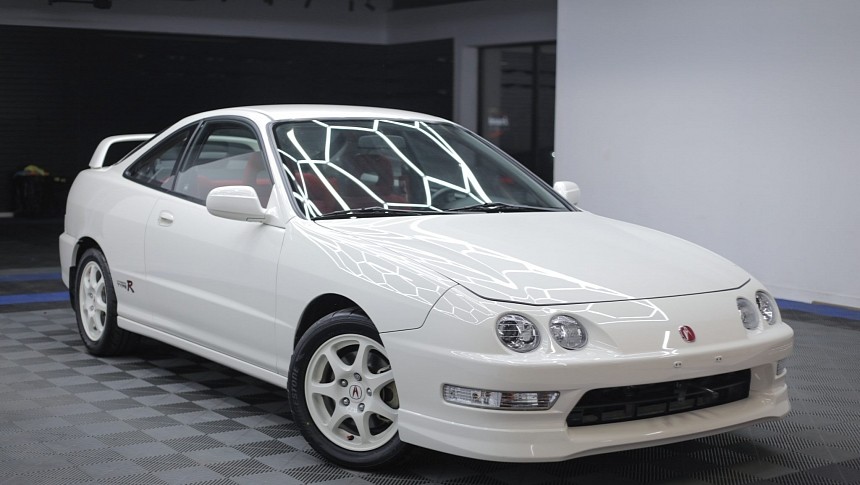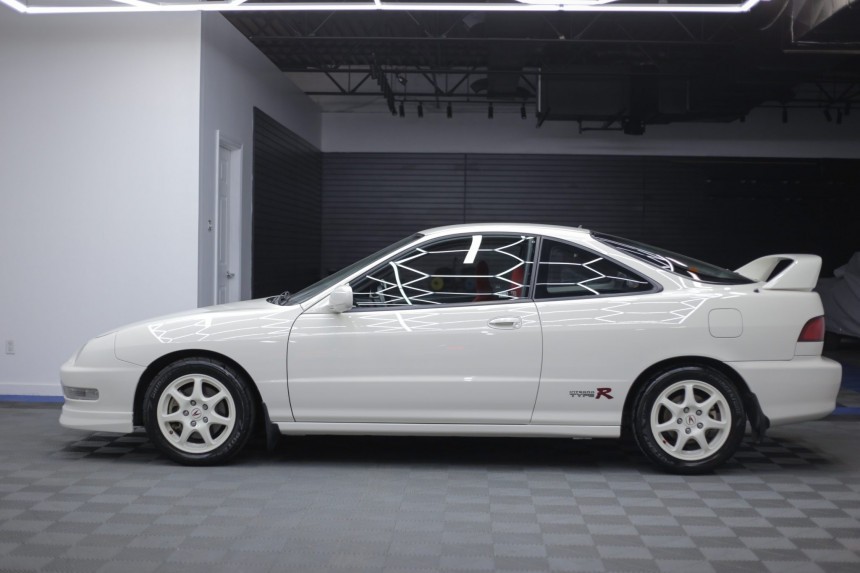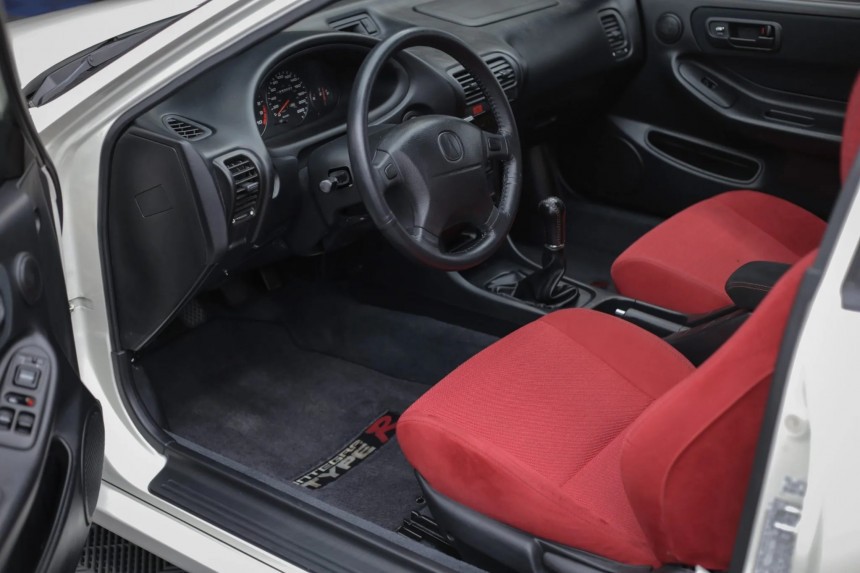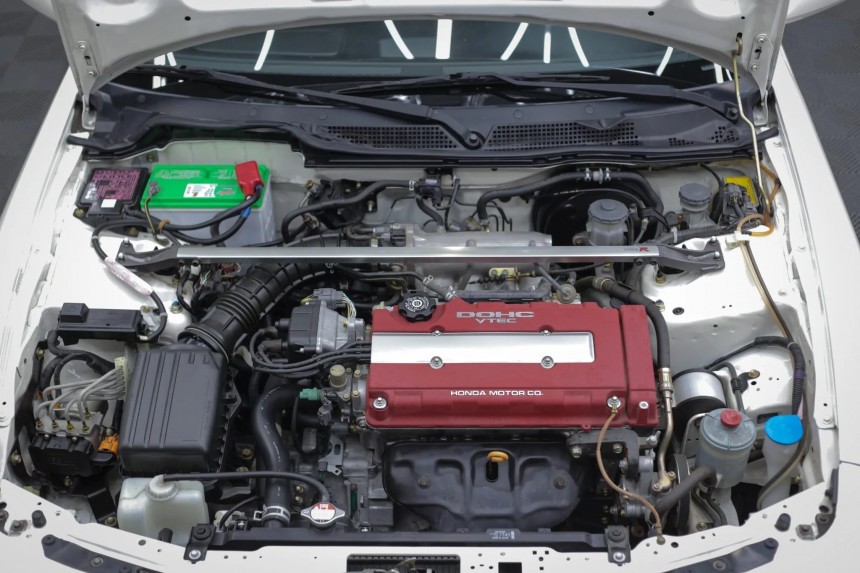I always hear people say you need a rear-wheel drive or an all-wheel-drive car to hit the track and properly go fast. But, there is a car that defies every stigma about front-wheel drive. A vehicle born from Honda's performance division that brought driving joy and pleasure to the masses – I am, of course, talking about the Acura Integra Type R, so let's take a quick look at what makes it so good.
The 1970s were one of the darkest times in automotive history. The oil crisis and emissions regulations choked the driving pleasure out of cars. This hit especially hard on American manufacturers – what are you supposed to do when your most significant gift to the world is a gas-guzzling V8, and gas isn't available anymore? You are left with building boxy, uninspiring cars with mediocre performance.
In this landscape of confused American car manufacturers, Japanese automobiles took the States by storm with efficient cars that offered good driving dynamics. But, this popularity wave ended in the 1980s, when Americans started slowly but surely to get back to their muscly, powerful ways of the past. That left Japanese carmakers in a pickle as people began to steer away from their cars.
So, to get sales back up, the leading Japanese automakers introduced divisions that could be sold for more money – thus, Infiniti, Lexus, and Acura were born. Acura, in 1986, opened up 60 new dealerships in North America, ready to sell two brand new cars – the Legend for the mid-size executive class, and the Integra, for the compact class.
Under the skin, the Integra was a Civic, but don't you think they just threw a body kit on and called it a day! No, sir. The Integra had disc brakes on all four corners, pre-tuned suspension, and a more powerful engine. The first generation ran from 1986 to 1990 when the new second-gen hit the showroom floors. It looked fantastic and packed a few goodies under the hood. But the best iteration of what Honda had to offer in terms of engines for the second generation arrived in 1992 with the GS-R name.
Under the hood of the GS-R, you will find the B17A1 engine with the holy grail of car tech – the VTEC. VTEC stands for Variable Valve Timing and Electronic Lift Control, and it works like this: you have three intake lifters instead of the two you would find in a regular car. When cruising, the two outside lifters are riding on a mellow cam profile, so the valves aren't open for very long, and fuel consumption is low. But put your foot down, and all hell breaks loose. A hydraulic pin is activated, and the intermediate lifter steps in, engaging a more aggressive cam profile.
The following year, Acura released the next generation of the Integra, and what was so great about the previous model just got dialed up to 11 with this new one. But, everything was about to get even better in 1997 when Acura descended from the skies and bestowed upon us the Integra Type R, which many claim to be the best front-wheel drive car ever made. So let's take a look at this one from 2001 and see if that is so.
Starting with the outside, this generation of the Integra is, in my eyes, uglier than the previous. The four-round headlights have become a staple for the model and tuner culture, but I need them to be more prominent and appropriately placed. It still looks fantastic and perfectly embodies the late '90s, early 2000s tuner car vibes.
This particular Integra is finished in Championship White, with go-fast touches in the shape of a front lip spoiler, a raised rear wing, and red Type R and Acura badges to contrast the white paint. Tying the old-school look is a set of white 15-inch alloy wheels with larger disc brakes than the normal Integra behind the wheels and a lower ride height.
Moving on to the inside and getting ready for quite a lot of red. The seats are upholstered in red microsuede and cloth, with a black dash and center console to contrast. To make it dance around the track, you have a four-spoke, leather-wrapped steering wheel which fronts a 230 kph (145 mph) speedometer and a tachometer with a mind-bending 8,400 rpm redline.
Speaking of that redline, we must return to the VTEC part of Honda. As I said, when VTEC engages, you get a considerable power boost. It's like having two engines in one, with dramatically different dynamics. For this generation of the Integra, the engine grew to 1.8 liters (110 ci), hence the name B18C5. Power sits at a respectable 195 hp (198 ps), which may not seem like a lot, BUT - it's a 22-year-old car, has relatively small displacement, is naturally aspirated, and is light. On top of that, it loves to rev high, and shifting the five-speed manual transmission is an absolute joy.
This Integra is now at auction in Etobicoke, Ontario, Canada. It sits at 31,000 US dollars with five whole days left on the auction - and that raises an interesting question. Why so much? Even more so, this one has around 18,000 miles on the clock (28,000 kilometers), which might be higher, as a mileage inconsistency is noted, and the Carfax said an accident in 2002.
These cars are no stranger to 40,000 dollar prices, and the explanation for the high price is pretty simple. People that grew up seeing them when they were kids can finally afford them. When you add to the equation the effect social media has on car culture, it's not surprising at all to see them go for big bucks.
In this landscape of confused American car manufacturers, Japanese automobiles took the States by storm with efficient cars that offered good driving dynamics. But, this popularity wave ended in the 1980s, when Americans started slowly but surely to get back to their muscly, powerful ways of the past. That left Japanese carmakers in a pickle as people began to steer away from their cars.
So, to get sales back up, the leading Japanese automakers introduced divisions that could be sold for more money – thus, Infiniti, Lexus, and Acura were born. Acura, in 1986, opened up 60 new dealerships in North America, ready to sell two brand new cars – the Legend for the mid-size executive class, and the Integra, for the compact class.
Under the hood of the GS-R, you will find the B17A1 engine with the holy grail of car tech – the VTEC. VTEC stands for Variable Valve Timing and Electronic Lift Control, and it works like this: you have three intake lifters instead of the two you would find in a regular car. When cruising, the two outside lifters are riding on a mellow cam profile, so the valves aren't open for very long, and fuel consumption is low. But put your foot down, and all hell breaks loose. A hydraulic pin is activated, and the intermediate lifter steps in, engaging a more aggressive cam profile.
The following year, Acura released the next generation of the Integra, and what was so great about the previous model just got dialed up to 11 with this new one. But, everything was about to get even better in 1997 when Acura descended from the skies and bestowed upon us the Integra Type R, which many claim to be the best front-wheel drive car ever made. So let's take a look at this one from 2001 and see if that is so.
This particular Integra is finished in Championship White, with go-fast touches in the shape of a front lip spoiler, a raised rear wing, and red Type R and Acura badges to contrast the white paint. Tying the old-school look is a set of white 15-inch alloy wheels with larger disc brakes than the normal Integra behind the wheels and a lower ride height.
Moving on to the inside and getting ready for quite a lot of red. The seats are upholstered in red microsuede and cloth, with a black dash and center console to contrast. To make it dance around the track, you have a four-spoke, leather-wrapped steering wheel which fronts a 230 kph (145 mph) speedometer and a tachometer with a mind-bending 8,400 rpm redline.
This Integra is now at auction in Etobicoke, Ontario, Canada. It sits at 31,000 US dollars with five whole days left on the auction - and that raises an interesting question. Why so much? Even more so, this one has around 18,000 miles on the clock (28,000 kilometers), which might be higher, as a mileage inconsistency is noted, and the Carfax said an accident in 2002.
These cars are no stranger to 40,000 dollar prices, and the explanation for the high price is pretty simple. People that grew up seeing them when they were kids can finally afford them. When you add to the equation the effect social media has on car culture, it's not surprising at all to see them go for big bucks.














